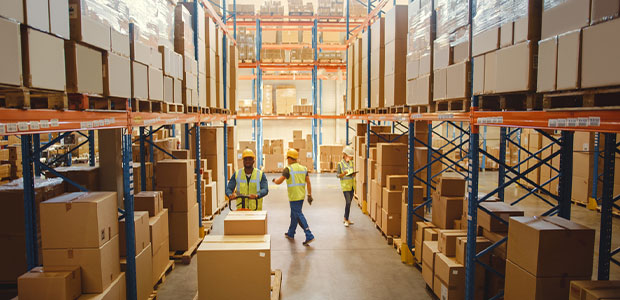
6 Ways to Improve Distribution Center Safety
- By Devin Partida
- Dec 15, 2021
Distribution center workers face various risks — including heavy equipment, weighty packages, electricity and the potential for slips or falls. Keeping these workers safe is possible with practical and easy-to-implement processes. These six strategies show how any distribution center can improve safety, helping to protect workers and prevent incidents.
- Begin With an Initial Site Assessment
Effective site safety begins with assessing existing risks and safety procedures. A thorough walkthrough identifying risk areas and potential threats is often a good starting point. Requesting safety assessments for the entire facility of individual pieces of equipment — like industrial doors — is a common next step. These allow managers to take advantage of an outside perspective on the distribution center’s safety, helping pinpoint risks and threats that may have been missed otherwise.
2. Implement Safety Standards and Warehouse Training
Once the main risks workers face have been identified, managers can fine-tune their center’s safety policies and training practices. Teaching workers about the risks they face and how to stay safe — using information like best practices, risk identification strategies, PPE and effective equipment operation — is essential for keeping the distribution center safe. The best training will be individualized for employees based on their role, existing knowledge and responsibilities.
3. Ensure Safety Equipment Meets Center Needs
Not every piece of PPE or safety equipment may provide the protection employees need. For example, managers may want to invest in a gate to improve security or safety by limiting when trucks can enter or exit an area. A barrier should be selected based on its penetration rating — a type of standardized grading that describes how much force is needed for a vehicle to crash. A low score signifies the barrier may not adequately protect workers from danger. Risk assessments and audits can determine what threats workers may face and the level of protection they may need.
4. Eliminate Clutter and Trash
Packaging, pallets and other types of clutter can make a warehouse much more difficult to navigate. Effective housekeeping is often a great way to improve site safety. Encouraging managers and employees to pick up trash when possible will help keep the warehouse floor clear of debris, making most tasks and the operation of heavy machinery much safer.
Managers should also be on the lookout for other obstacles, like loose mats and rugs, debris or cables placed over walkways. Securing, removing or covering these items will help ensure safe navigation for employees, whether they’re walking through the facility or operating heavy equipment like a forklift.
5. Develop Ergonomic Working Practices
A significant portion of warehouse injuries are musculoskeletal disorders (MSDs), also called repetitive strain injuries. These are caused by movements that are repetitious, awkward or put pressure on a worker’s joints and muscles. Workplace ergonomics can help reduce the risk of MSDs — for example, lifting from the legs rather than the back. Best practices for moving heavy packages, operating machinery for long periods or even moving around the workplace can reduce MSDs.
6. Build a Culture of Safety and Awareness
Training and equipment can only provide so much protection if workers believe they can or should cut corners, skip safety procedures or otherwise work unsafely. At a workplace with a culture of safety, employees understand how their actions affect themselves and the people around them. They also know about the steps their employer takes to improve their well-being. These workers are more likely to take the lead on making the facility safer to work in. A culture of safety also ensures equipment is used properly and that employees and managers take advantage of the tools available to them.
Keep Distribution Centers Safe With These Strategies
Often, simple adjustments to safety and compliance procedures can keep distribution center workers safe. Changes as small as enacting new safety standards, cleaning up trash and following ergonomic working practices can protect employees from common risks.
More effective training and the supply of safety equipment can help keep workers safe from more serious risks, like heavy equipment, electricity and chemical hazards.